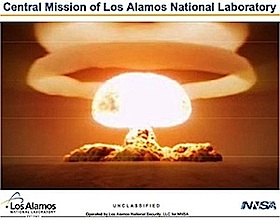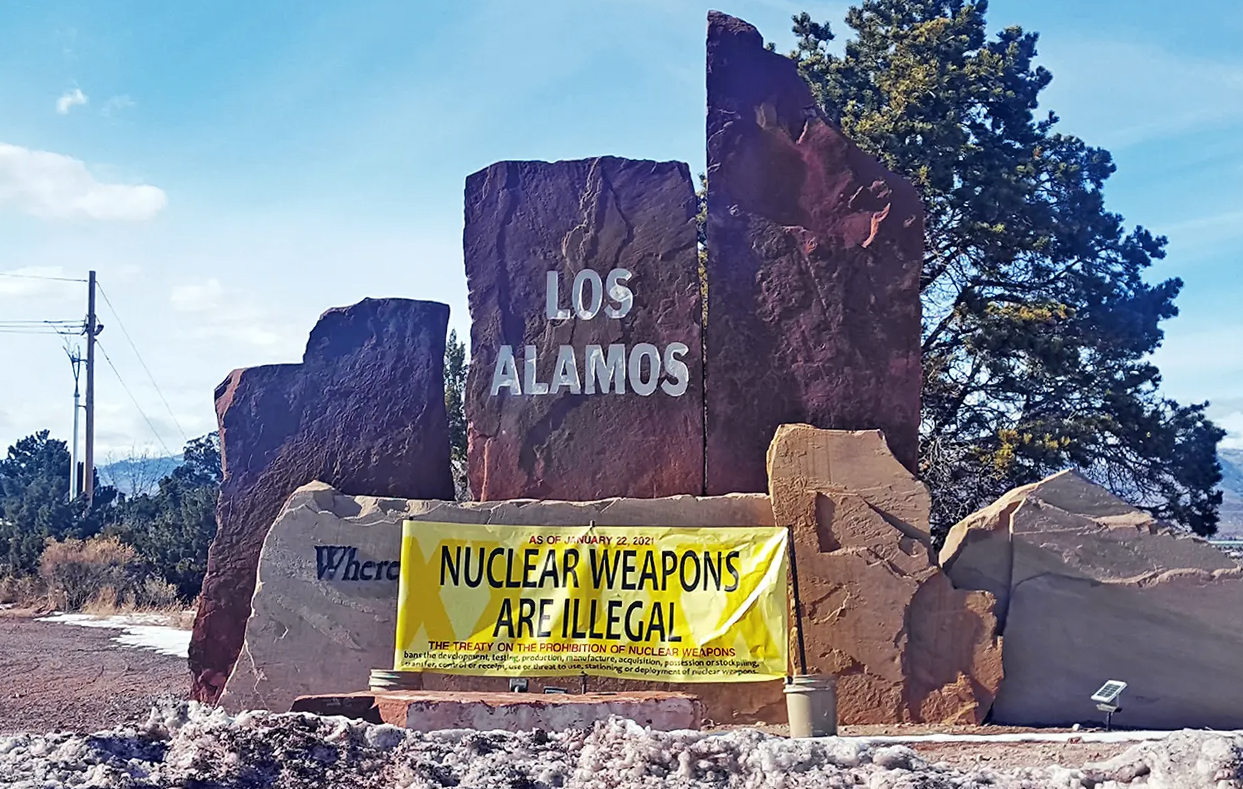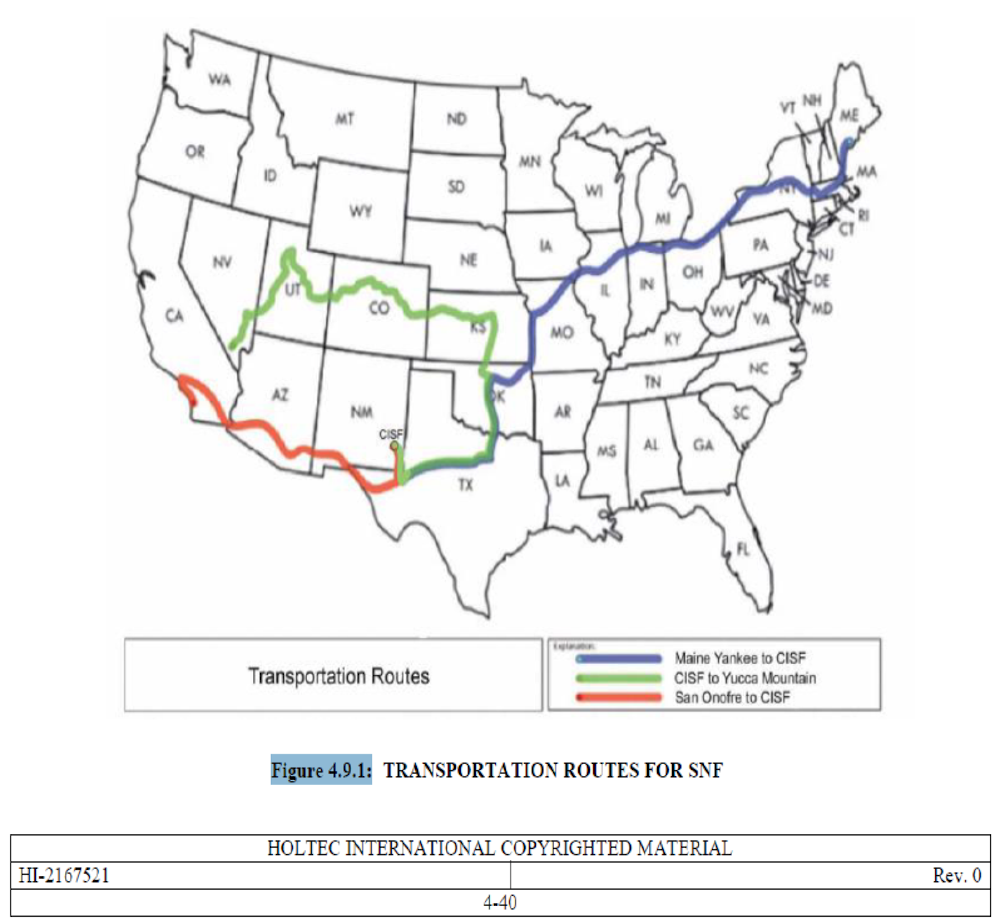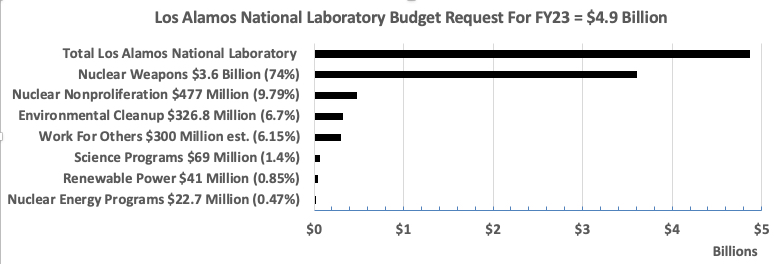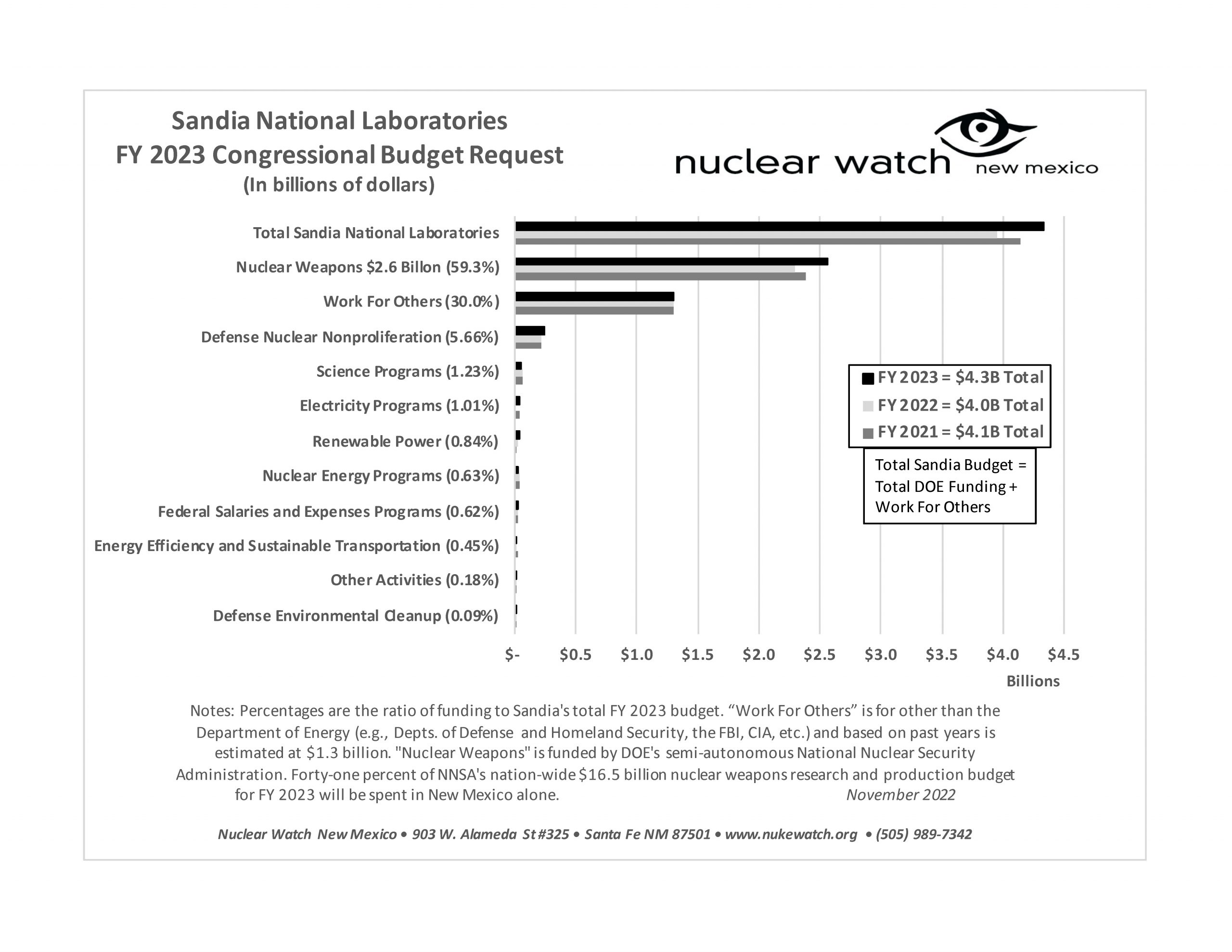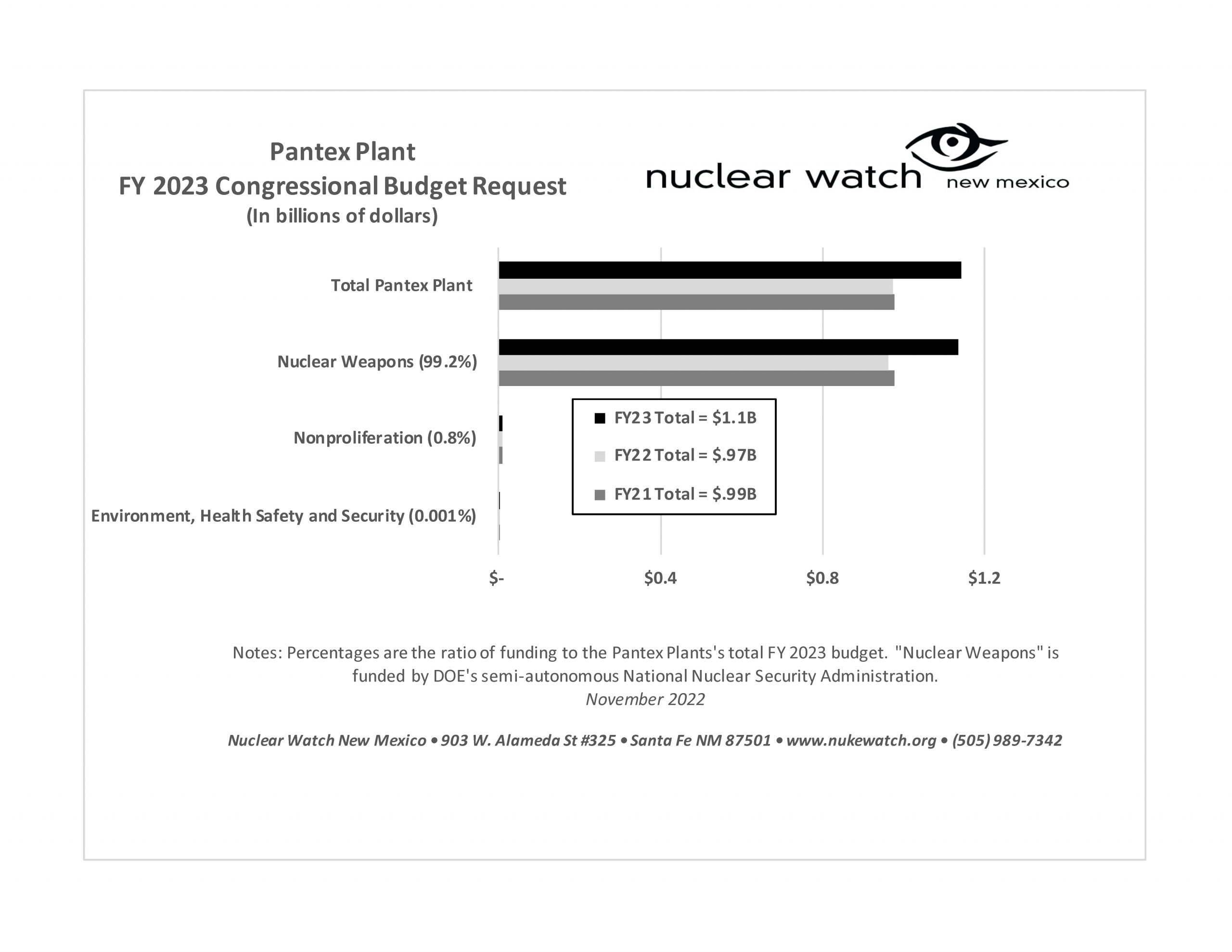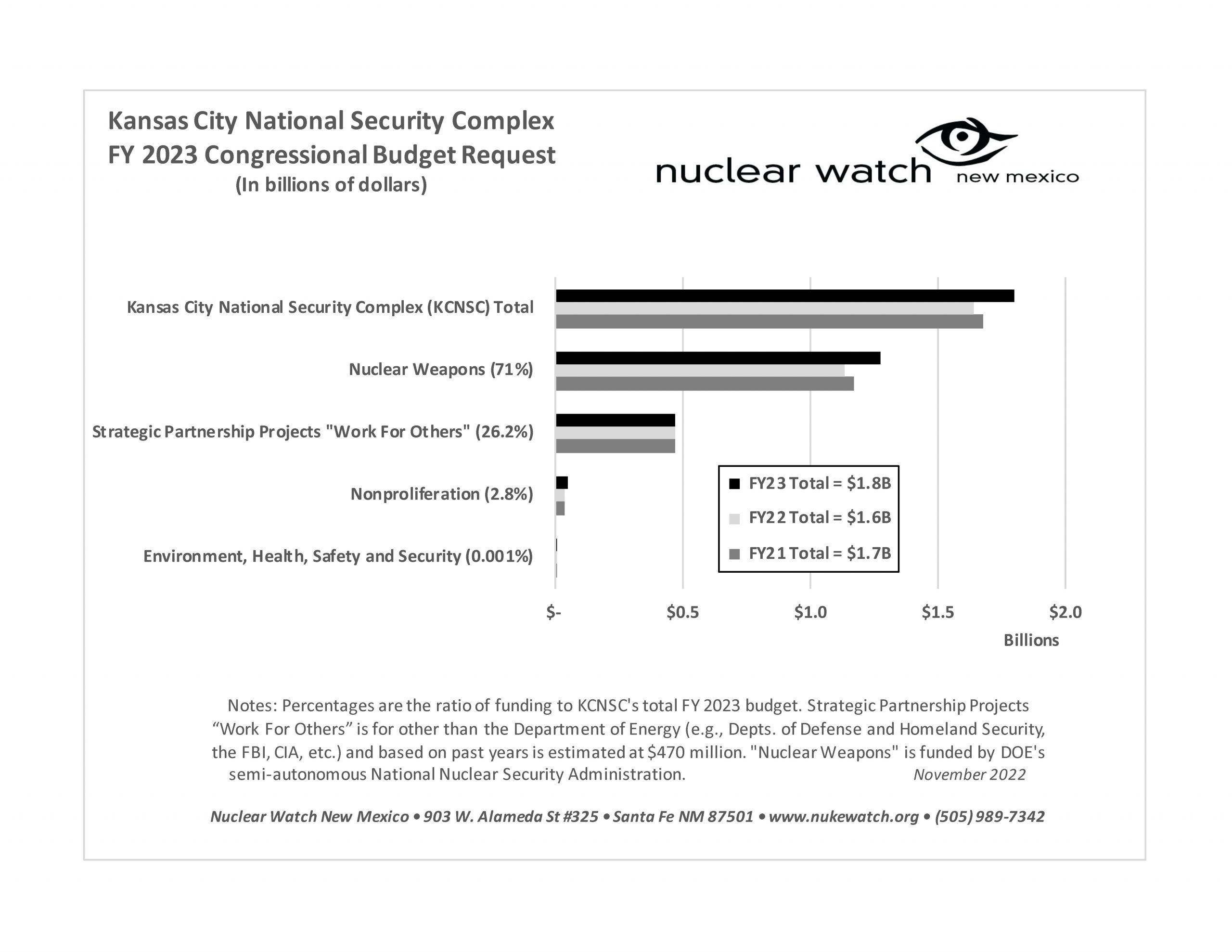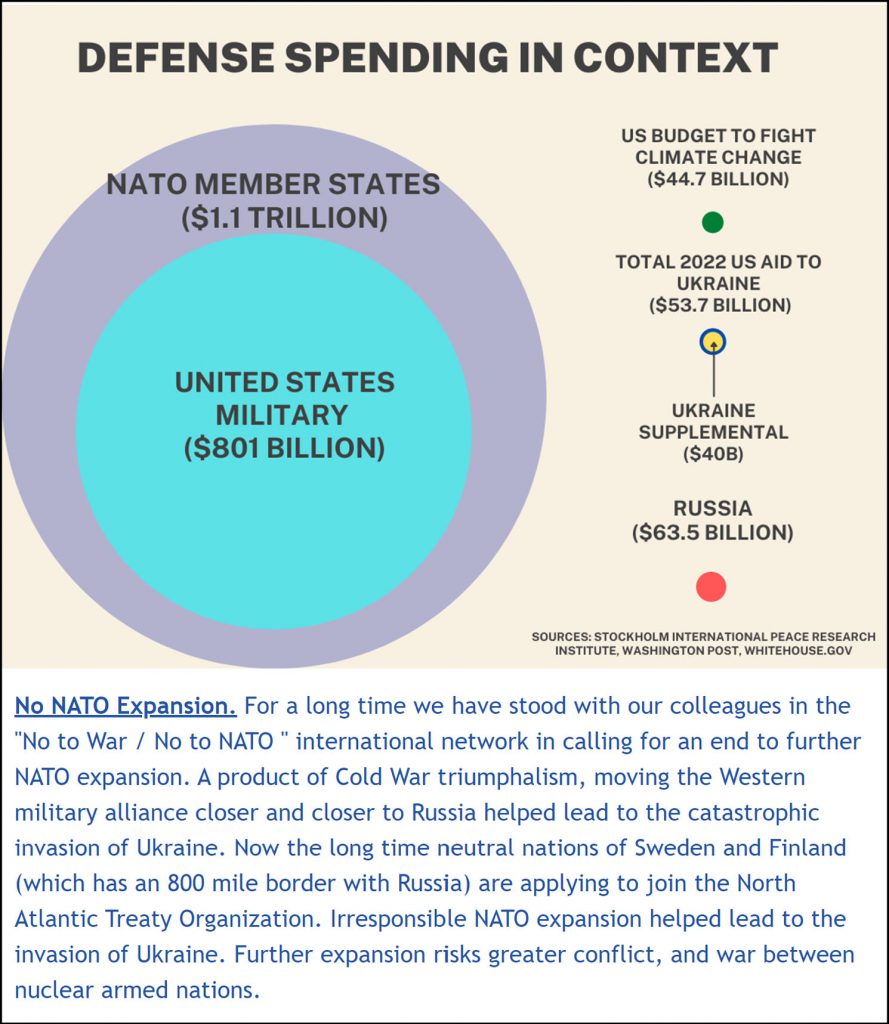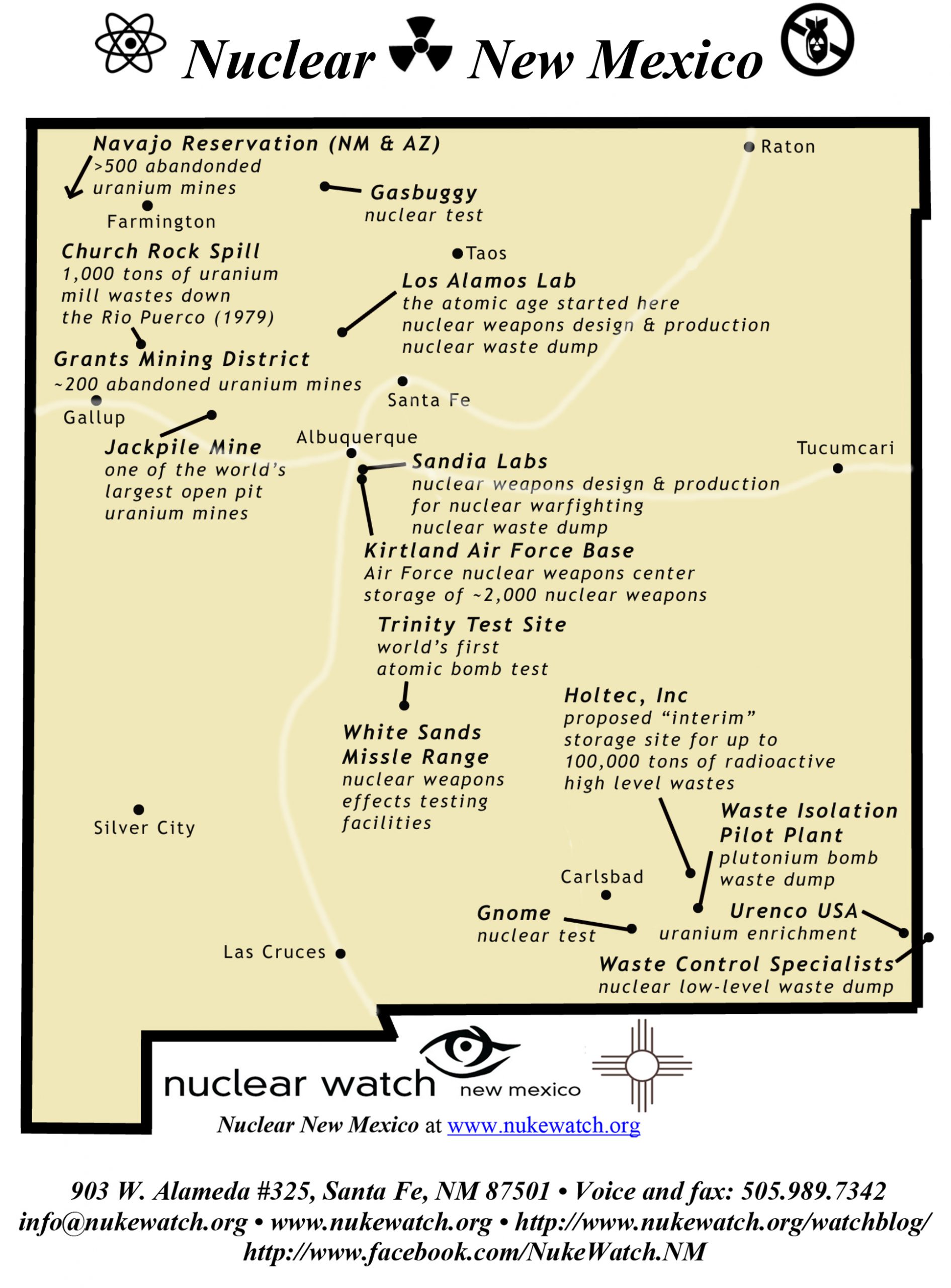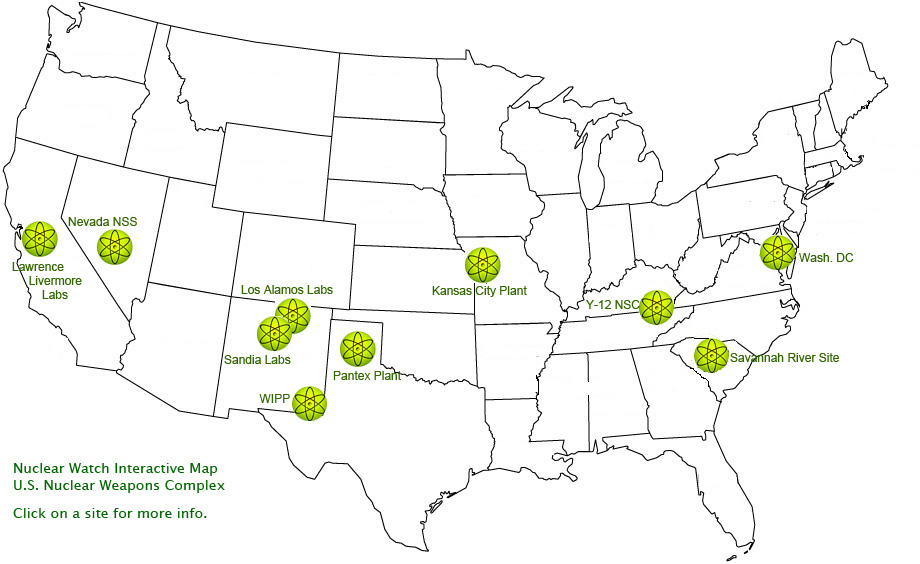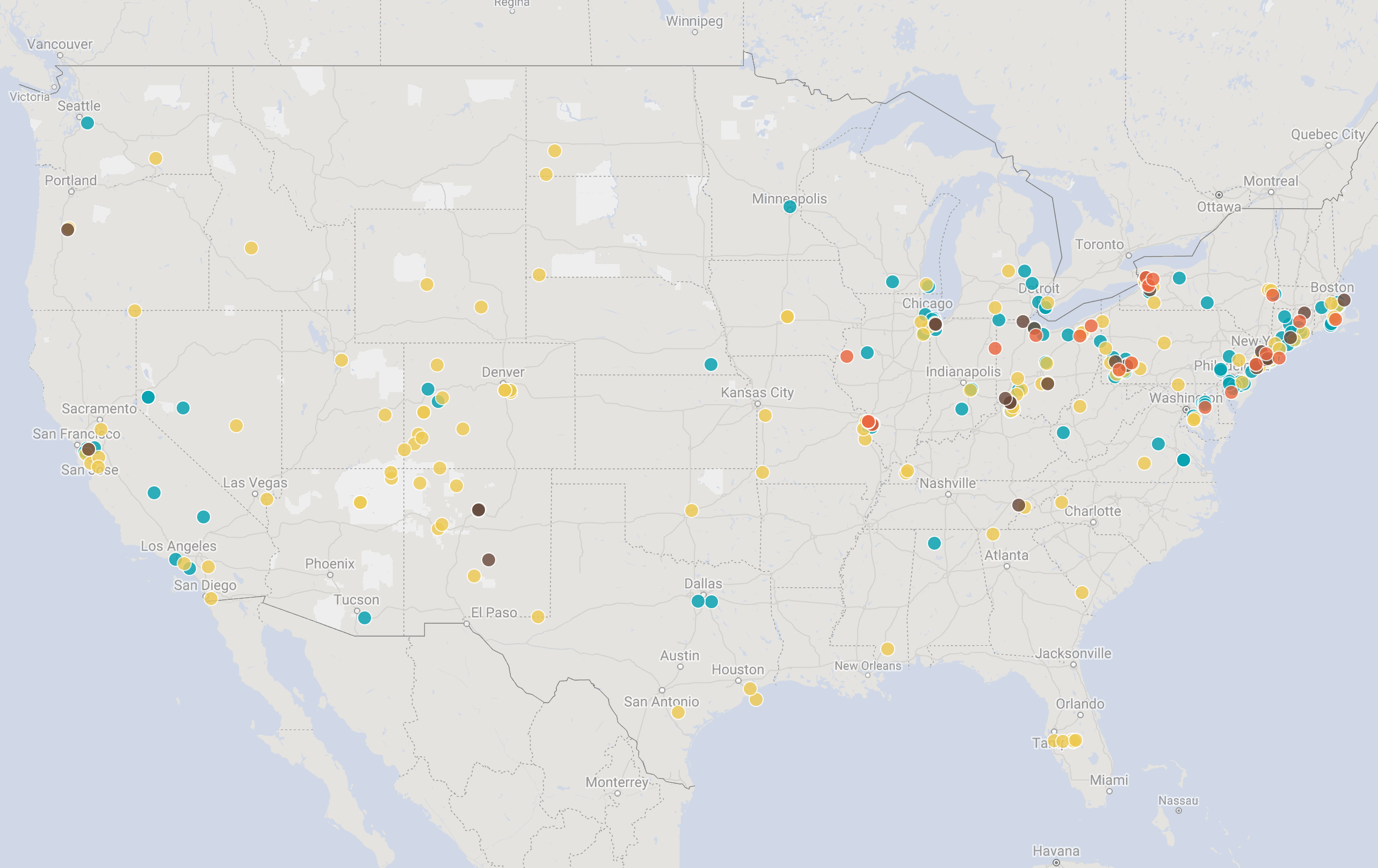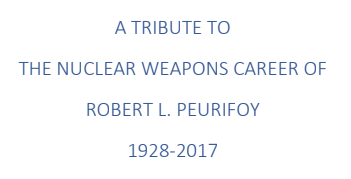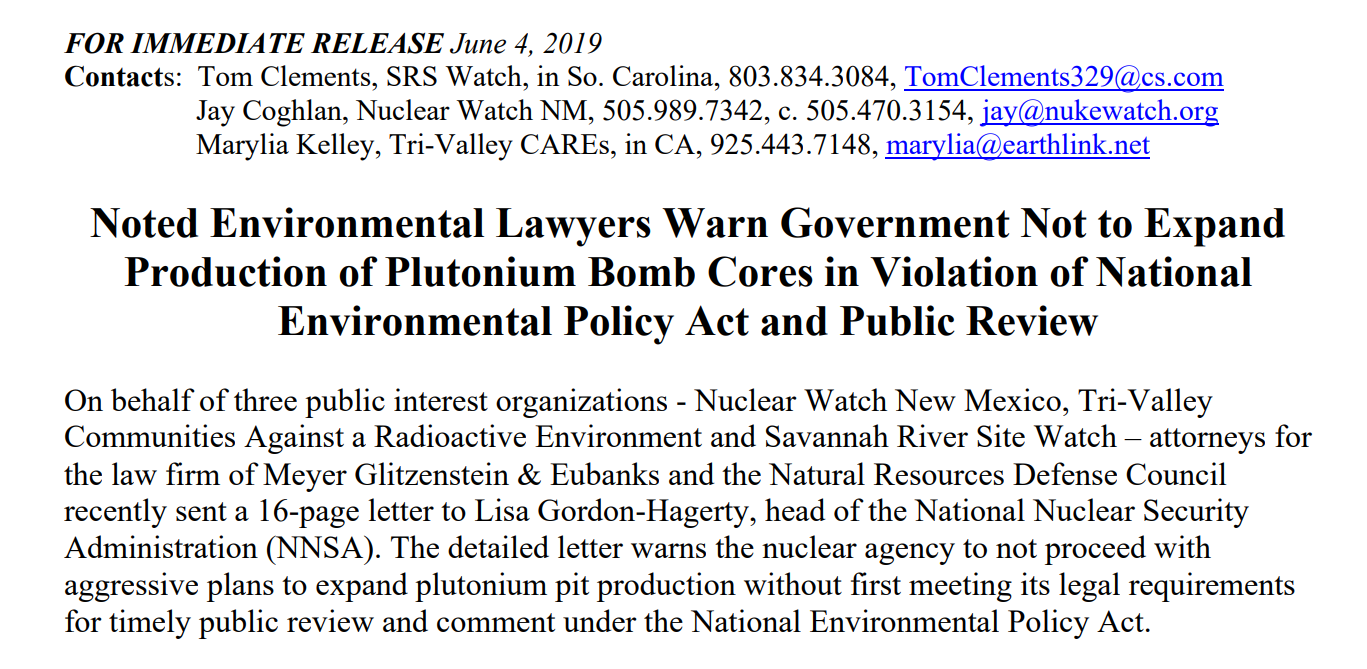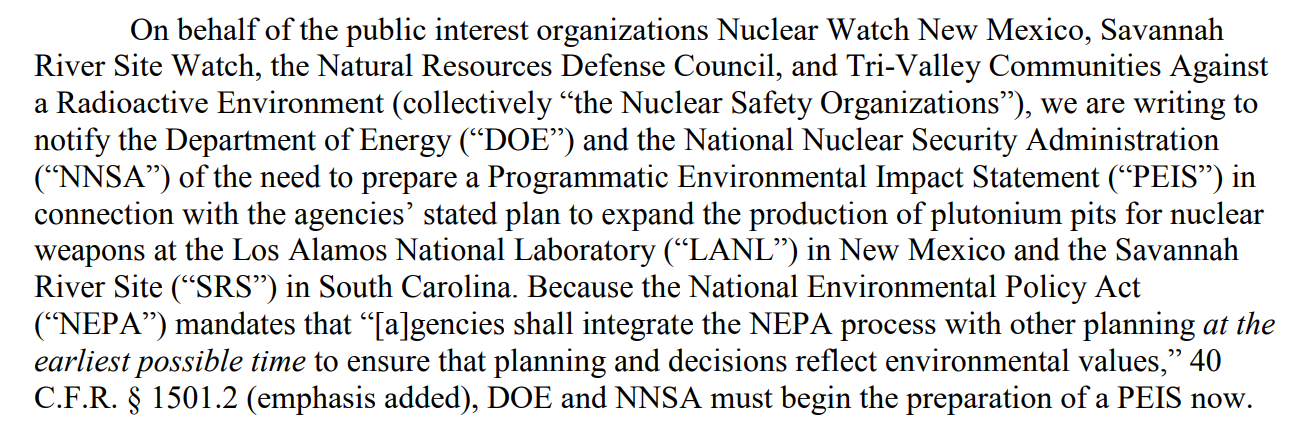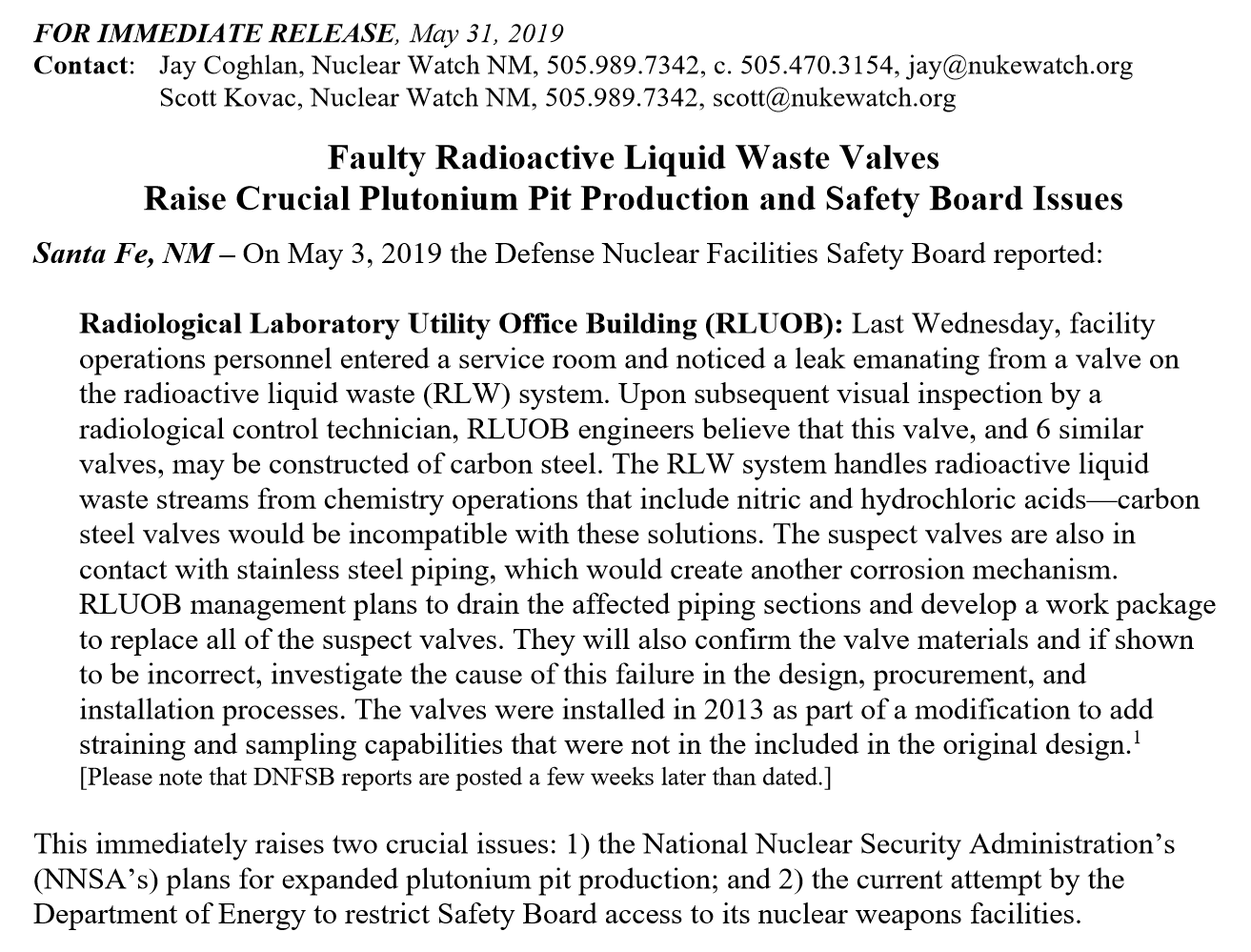QUOTE OF THE WEEK
Nothing Found
It seems we can’t find what you’re looking for. Perhaps searching can help.
LANL’s Central Mission: Los Alamos Lab officials have recently claimed that LANL has moved away from primarily nuclear weapons to “national security”, but what truly remains as the Labs central mission? Here’s the answer from one of its own documents:
LANL’s “Central Mission”- Presented at: RPI Nuclear Data 2011 Symposium for Criticality Safety and Reactor Applications (PDF) 4/27/11
Banner displaying “Nuclear Weapons Are Now Illegal” at the entrance in front of the Los Alamos National Lab to celebrate the Entry Into Force of the Nuclear Weapon Ban Treaty on January 22, 2021
Nothing Found
It seems we can’t find what you’re looking for. Perhaps searching can help.
Follow the Money!
Map of “Nuclear New Mexico”
Nuclear Watch Interactive Map – U.S. Nuclear Weapons Complex
In 1985, US President Ronald Reagan and and Russian President Mikhail Gorbachev declared that “a nuclear war cannot be won and must never be fought.”
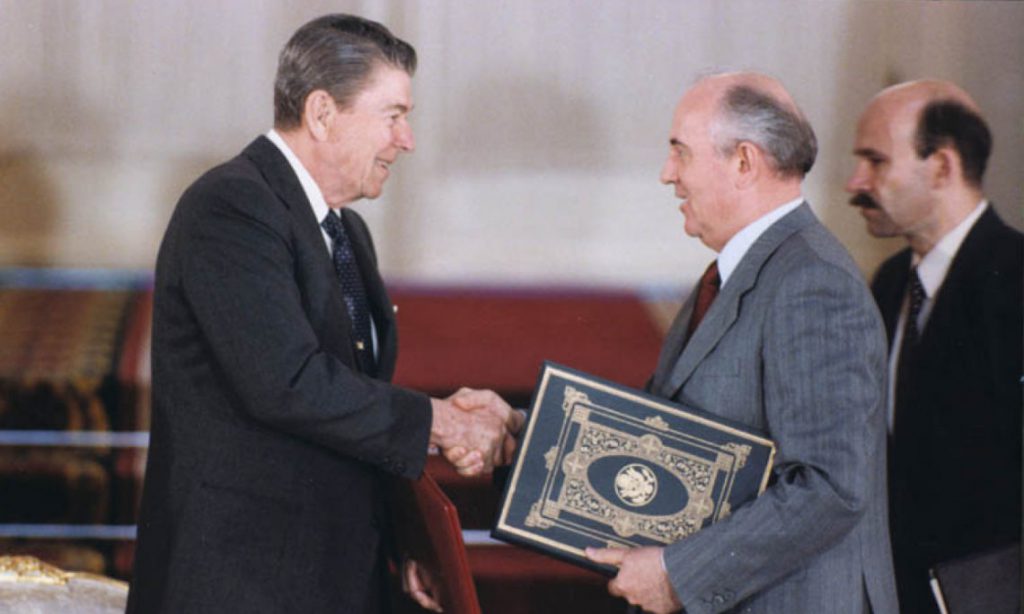
Waste Lands: America’s Forgotten Nuclear Legacy
The Wall St. Journal has compiled a searchable database of contaminated sites across the US. (view)
Related WSJ report: https://www.wsj.com
2022 BLOG POSTS
Nothing Found
It seems we can’t find what you’re looking for. Perhaps searching can help.
New & Updated
Halting Holtec – A Challenge for Nuclear Safety Advocates
The loading of 3.6 million pounds of highly radioactive spent nuclear fuel has been indefinitely halted at the San Onofre independent spent fuel storage installation (ISFSI), operated by Southern California Edison and designed by Holtec International.
BY JAMES HEDDLE | counterpunch.org
Last month, the Nuclear Regulatory Commission (NRC) fined Southern California Edison an unprecedented $116,000 for failing to report the near drop of an 54 ton canister of radioactive waste, and is delaying giving the go-ahead to further loading operations until serious questions raised by the incident have been resolved.
Critics have long been pointing out that locating a dump for tons of waste, lethal for millions of years, in a densely populated area, adjacent to I-5 and the LA-to-San Diego rail corridor, just above a popular surfing beach, in an earthquake and tsunami zone, inches above the water table, and yards from the rising sea doesn’t seem to make a lot of sense from a public safety standpoint.
The near drop incident last August, revealed by a whistleblower, has drawn further attention to the many defects in the Holtec-designed and manufactured facility. It has been discovered that the stainless steel canisters, only five-eights inches thick, are being damaged as they are lowered into the site’s concrete silos. Experts have warned that the scratching or gouging that is occurring makes the thin-walled canisters even more susceptible to corrosion-induced cracking in the salty sea air, risking release of their deadly contents into the environment and even of hydrogen explosions.
Furthermore, critics point out, these thin-walled canisters are welded shut and cannot be inspected, maintained, monitored or repaired.
How Trump Could Restart the Nuclear Arms Race
Some key arms control agreements could be on the chopping block.
BY FRED KAPLAN | slate.com
If President Donald Trump doesn’t act quickly, the nuclear arms race, which has been fairly dormant for decades, might break into a gallop.
Trump is famously hostile toward international treaties, especially those that constrain America’s actions, even if they’re actions that no one is particularly keen to take. The Iran nuclear deal, the Paris climate agreement, the Trans-Pacific Partnership, and the Intermediate-Range Nuclear Forces Treaty are all commitments that Trump has ripped up for no good reason.
The scuttling of that last accord, often abbreviated as the INF Treaty, which was signed in 1987 by U.S. President Ronald Reagan and Soviet Union leader Mikhail Gorbachev (and eliminated all U.S. and Soviet missiles having a range between 500 and 5,000 kilometers), marked the first time Trump abrogated a nuclear arms agreement between the United States and Russia, the two major nuclear powers.
Bob Peurifoy worked at the Sandia Labs for 39 years, serving as director of nuclear weapon development and retiring as a vice president. He was the driving force behind many safety improvements to U.S. nuclear weapons and a strong believer in conservative maintenance of the stockpile. Bob was also a strong critic of aggressive Life Extension Programs that further diverged the stockpile from its tested pedigree and wasted taxpayers’ money. As Bob’s friend and colleague Gordon Moe puts it, “Bob’s family and I hope that Bob’s wisdom and reason as reflected in the Tribute will continue to benefit humanity for many more years through its use as a reference by researchers in the field of nuclear weaponry.”
VIEW FULL TRIBUTE – PDF
Nation’s most ambitious project to clean up nuclear weapons waste has stalled at Hanford
The Energy Department’s most environmentally important and technically ambitious project to clean up Cold War nuclear weapons waste has stalled, putting at jeopardy an already long-delayed effort to protect the Columbia River in central Washington.
BY RALPH VARTABEDIAN | latimes.com
Entry sign at Hanford Site, Washington.Photograph taken by Tobin Fricke – January 2005.
In a terse letter last week, state officials said the environmental project is at risk of violating key federal court orders that established deadlines after past ones were repeatedly missed.
Two multibillion-dollar industrial facilities intended to turn highly radioactive sludge into solid glass at the Hanford nuclear site have been essentially mothballed. Construction was halted in 2012 because of design flaws and Energy Department managers have foundered in finding alternatives, according to the letter that threatens new litigation.
The department has stored 56 million gallons of radioactive sludge left over from the production of plutonium in 177 leaky underground tanks on a desert plateau a few miles from the Columbia River, raising concerns that the material has migrated into groundwater and eventually will reach the largest river in the West.
 Listen to the latest episode of Ploughshares Fund’s new podcast, Press the Button, featuring Eric Schlosser, filmmaker and author of several publications, including Command and Control. This is a particularly powerful episode to share. Eric is clear and compelling about the inherent risks of our deterrence strategy, the fallibility of the US nuclear command and control and the horrors from the use of just one nuclear weapon. He is one of the most compelling advocates on our issues in the country today. It’s worth a listen!
Listen to the latest episode of Ploughshares Fund’s new podcast, Press the Button, featuring Eric Schlosser, filmmaker and author of several publications, including Command and Control. This is a particularly powerful episode to share. Eric is clear and compelling about the inherent risks of our deterrence strategy, the fallibility of the US nuclear command and control and the horrors from the use of just one nuclear weapon. He is one of the most compelling advocates on our issues in the country today. It’s worth a listen!
You can listen here: https://www.ploughshares.org/pressthebutton
Or – Listen and subscribe on iTunes · Spotify · SoundCloud · Google Play
HASC Panel’s Bill Could Slow-Roll NNSA’s Planned S.C. Pit Plant
The Department of Energy would no longer have to make 80 plutonium pits a year by the end of the next decade, if legislation unveiled Monday in the Democrat-controlled House becomes law.
EXCHANGE MONITOR | June 4, 2019
The legislation, due for a vote Tuesday by House Armed Services strategic forces subcommittee “would repeal the requirement for the Secretary of Energy to demonstrate the capability to produce war reserve plutonium pits at a rate sufficient to produce 80 pits per year by 2027,” according to the subcommittee’s portion of the 2020 National Defense Authorization Act (NDAA).
The NDAA is the annual policy bill that sets funding limits for defense programs including those managed by the DOE’s National Nuclear Security Administration (NNSA). The full House Armed Services Committee is set to vote on the entire House NDAA on June 12.
New, More Usable Nukes for Trump? No.
Congress should use the new defense authorization bill to bar the deployment of new, dangerous, and redundant nuclear weapons.
REP. TED W. LIEU D-CALIFORNIA & SEN. EDWARD J. MARKEY D-MASSACHUSETTS | defenseone.com
U.S. NAVY / MASS COMMUNICATION SPECIALIST 1ST CLASS JAMES KIMBER |The Ohio-class ballistic missile submarine USS Tennessee (SSBN 734) returns to Naval Submarine Base Kings Bay.
The United States has the world’s most powerful military ever. It spends more on defense than the next seven countries combined and has developed many of the most destructive conventional weapons ever created to ensure that America can address any threat. Congress consistently authorizes investments in innovative technology and weaponry to protect our country and our allies. We also possess a strong nuclear deterrent.
These are insanely destructive weapons with an unparalleled ability to kill and destroy, both instantly and for years afterward from the nuclear fallout. Nuclear weapons should never, ever be used first and new nuclear weapons must not be designed to be more usable.
Yet last year, the Trump Administration came to Congress with just such a request to develop a new “low-yield” nuclear warhead for our submarine-launched ballistic missile, the Trident D5. Congress foolishly authorized the development of this warhead on a party-line vote, but there is still time to correct course.
Letter on Need for a Programmatic EIS for Expanded Plutonium Pit Production
Could Trump Trash The Nuclear Test Ban Treaty?
Think of what the world would be like if Russia, the United States, China, India and Pakistan were testing nuclear weapons.
BY MICHAEL KREPON | forbes.com
They are not because of the Comprehensive Test Ban Treaty (CTBT) which is responsible for shutting down nuclear testing by major and regional powers for more than two decades. Walking away from the CTBT would be extraordinarily dumb and dangerous, but the Trump administration has taken a step in this direction.
The CTBT was negotiated in 1996, but it isn’t solidly in place. While Russia has signed and ratified it, Senate Republicans rejected it in 1999. China, like the United States, has signed but not ratified. There are other holdouts, including India and Pakistan. And yet none of these states has tested nuclear weapons since 1998. When a treaty is negotiated, it’s common diplomatic practice not to undercut its objectives while awaiting its entry into force. Hence the two-decades-long moratorium on testing by every nuclear-armed state except North Korea.
30th Anniversary of Tiananmen Square
Thirty years ago, Beijing’s Tiananmen Square became the focus for large-scale protests, which were crushed by China’s Communist rulers.
In the 1980s, China was going through huge changes. The ruling Communist Party began to allow some private companies and foreign investment. Leader Deng Xiaoping hoped to boost the economy and raise living standards. However, the move brought with it corruption, while at the same time raising hopes for greater political openness. The Communist Party was divided between those urging more rapid change and hardliners wanting to maintain strict state control. In the mid-1980s, student-led protests started, and in spring 1989, the protests grew, with demands for greater political freedom. On June 4, 1989, Chinese troops were sent to crush pro-democracy student protests in the famous square in central Beijing, leaving at least hundreds—and possibly thousands—of people dead.
The casualties included soldiers, but were overwhelmingly unarmed demonstrators who had been protesting in the square for six weeks, turning the site into the hub for protests in 400 other cities nationwide. Millions of people took part in the demonstrations, with more than 1 million people descending on Tiananmen Square.
As part of an ongoing brutal crackdown of internal dissent, Chinese authorities have carried out a harsh policy of history suppression, forbidding on-line or other discussions of the events at Tiananmen Square. In light of that it is worth recalling what U.S. government officials learned at the time and how they assessed Beijing’s response to internal dissent.
To mark an event that decisively shaped contemporary China, the National Security Archive is republishing three documentary E-books that appeared on previous anniversaries, in 1999, 2001, and 2015. The declassified documents demonstrate that U.S. embassy officials realized very quickly that the Chinese military had carried out a massacre ordered by top officials who feared the public expression of dissent could threaten Communist Party rule. VIEW HERE
Billion-dollar LANL building has plumbing problem
JUNE 1, 2019 | BY MARK OSWALD | abqjournal.com
Copyright © 2019 Albuquerque Journal
SANTA FE – A building at Los Alamos National Laboratory with a price pegged at more than $1 billion apparently has some bad plumbing.
A federal safety oversight board recently reported that the operations staff at the Radiological Laboratory Utility Office Building found a leak in the building’s radioactive liquid waste system.
Lab watchdogs have labeled RLUOB, which got the green light for construction in 2011, as the most expensive building in New Mexico. The lab’s website says it’s part of a capital project to replace aging Cold War-era facilities.
Jay Coghlan of Nuclear Watch New Mexico, a frequent LANL critic who called attention to the recent safety board report, said the plumbing problem is symptomatic of the lab’s history of safety issues, which has included using the wrong kind of cat litter as a desiccant when packing a radioactive waste drum. A reaction in the drum caused it to breach in 2014 and contaminate the nation’s nuclear waste storage facility near Carlsbad.
“Remember, this is the gang that couldn’t get it straight between organic and inorganic cat litter, sending a radioactive waste drum that ruptured and closed the Waste Isolation Pilot Plant for three years, costing the American taxpayer three billion dollars to reopen,” Coghlan said in a statement. “Now we learn that they don’t know elementary plumbing for liquid radioactive wastes lines, and we’re supposed to trust them while they unjustifiably expand plutonium pit production?”
LANL is in the process of ramping up for a congressional mandate to the National Nuclear Security Administration, which oversees the nation’s weapons complex, for production of “pits,” the plutonium cores of nuclear weapons as part of a huge plan to modernize the nation’s nuclear arsenal.
Faulty Radioactive Liquid Waste Valves Raise Crucial Plutonium Pit Production and Safety Board Issues

There should be no expanded pit production until nuclear safety is fully assured by an independent, unrestricted Safety Board, and our congressional delegation should be the first to demand that.
ACTION ALERTS
Nothing Found
It seems we can’t find what you’re looking for. Perhaps searching can help.
Nothing Found
It seems we can’t find what you’re looking for. Perhaps searching can help.
Interfaith Panel Discussion on Nuclear Disarmament - August 9
Nothing Found
It seems we can’t find what you’re looking for. Perhaps searching can help.
New Nuclear Media
Nothing Found
It seems we can’t find what you’re looking for. Perhaps searching can help.

